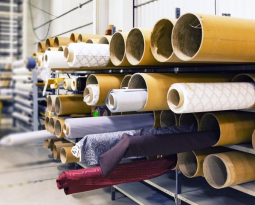$280B Bill for Semiconductor Industry Tax Incentives Passes Key Senate Test to Support the Global Lead in the Industry
According to IC Insights’ updated review and analysis of global data, the Americas – and specifically the United States – remain the globe’s biggest investors into semiconductor R&D.
In 2021, the Americas led with their 55.8% slice of the total $80.5 billion sunk into technological research and development. But the data shows that Asia-Pacific countries have been increasing their spending at a much more radical pace, leading them to gain 11.5% of the pie. It would seem this market too is approaching a duopoly, setting trends for decades to come.
The United States Senate has recently advanced a $280 billion bill designed to further boost the semiconductor industry. This bill is meant to accelerate high tech research that will be critical to the economy in future decades. A bill like this would only support their leading position in the global race.
The Senate needed 60 votes to advance the bill and with a vote of 64-32, the legislation is now on track to final passage in the Senate. The White House has led support for the bill along with other industry leaders. These leaders have identified that government subsidies are crucial to maintaining this global lead. They say the pandemic has exposed the dangers to the economy and to national security of relying too heavily on foreign-made computer chips.
The bill would provide $42 billion in grants and other incentives for the semiconductor industry as well as a 25% tax credit for those companies that build chip plants, or fabs, in the U.S. The cost of the tax break is projected to be about $24 billion over 10 years. The bill also authorizes about $200 billion to enhance scientific research over the same timeframe.
“We are not used to providing these kinds of financial incentives to businesses, but when it costs 30 percent less to build these manufacturing facilities across the seas in Asia and our access to that supply chain is potentially jeopardized by very real threats, it is a necessary investment for us to make,” said Sen. John Cornyn, R-Texas.
Are you developing new technology for an existing application? Did you know your development work could be eligible for the R&D Tax Credit and you can receive up to 14% back on your expenses? Even if your development isn’t successful your work may still qualify for R&D credits (i.e. you don’t need to have a patent to qualify). To find out more, please contact a Swanson Reed R&D Specialist today or check out our free online eligibility test.
Who We Are:
Swanson Reed is one of the U.S.’ largest Specialist R&D tax advisory firms. We manage all facets of the R&D tax credit program, from claim preparation and audit compliance to claim disputes.
Swanson Reed regularly hosts free webinars and provides free IRS CE and CPE credits for CPAs. For more information please visit us at www.swansonreed.com/webinars or contact your usual Swanson Reed representative.

















